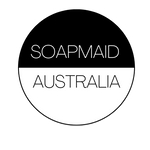
The Difference Between Natural Liquid Soap and Surfactant-Based Liquid Cleansers
Natural Liquid Soap vs Surfactant Cleansers: pH, Skin Impact & Best Choice
Alkaline soap vs pH-balanced syndet — understand the science to choose the right cleanser for your skin

In skincare and hygiene, cleanser choice impacts skin health. Natural liquid soap and surfactant-based cleansers (syndets) both cleanse — but differ in composition, pH, and skin interaction. This Australian guide breaks down the science to help you select the optimal product for your skin type and values.
What is Natural Liquid Soap?
Made via saponification: natural oils + potassium hydroxide (KOH) → soap + glycerine.
Key Characteristics
- Ingredients: Olive, coconut, castor oils; essential oils; water
- pH: 9–10 (alkaline)
- Lather: Creamy, moderate foam
- Skin Feel: Clean; may feel tight if overused
- Glycerine: Natural humectant retains moisture
What are Surfactant-Based Cleansers?
Synthetic detergents using surfactants (e.g., SCI, CAPB, SLES) to emulsify oils.
Key Characteristics
- Ingredients: SCI, SLSA, CAPB, preservatives, pH adjusters
- pH: 5.0–6.0 (skin-matched)
- Lather: Rich, high foam
- Skin Feel: Squeaky clean; can be drying
- Stability: Long shelf life, consistent performance
pH Science: Skin’s acid mantle = pH 4.5–5.5. Alkaline soap temporarily raises pH → disrupts barrier. Syndets maintain pH → preserve barrier (*Journal of Investigative Dermatology*, 2018).

Soap vs Syndet: Detailed Comparison
| Factor | Natural Liquid Soap | Surfactant Cleanser |
|---|---|---|
| pH | 9–10 | 5.0–6.0 |
| Skin Barrier | May disrupt (temporary) | Preserves integrity |
| Cleansing Power | Excellent oil removal | High emulsification |
| Moisture | Glycerine retains | May need humectants |
| Eco-Impact | Biodegradable | Varies (SCI = biodegradable) |
| Best For | Oily skin, hands | Face, sensitive skin |
Choosing the Right Cleanser for Your Skin
- Sensitive/Dry Skin: Choose pH 5.5 syndet (SCI-based) to avoid barrier damage.
- Oily/Acne-Prone: Natural soap removes excess sebum; follow with toner.
- Eczema/Psoriasis: Syndet with ceramides or soap-free formula.
- Eco-Conscious: Natural soap or biodegradable SCI cleanser.
- Fragrance Sensitivity: Unscented versions of both.

Pro Tip: After soap, use apple cider vinegar rinse (1:10) to restore pH.
Shop Soap Surfactants
Unscented | Olive & Coconut | Australian Made
Unscented | Olive & Coconut | Australian Made
